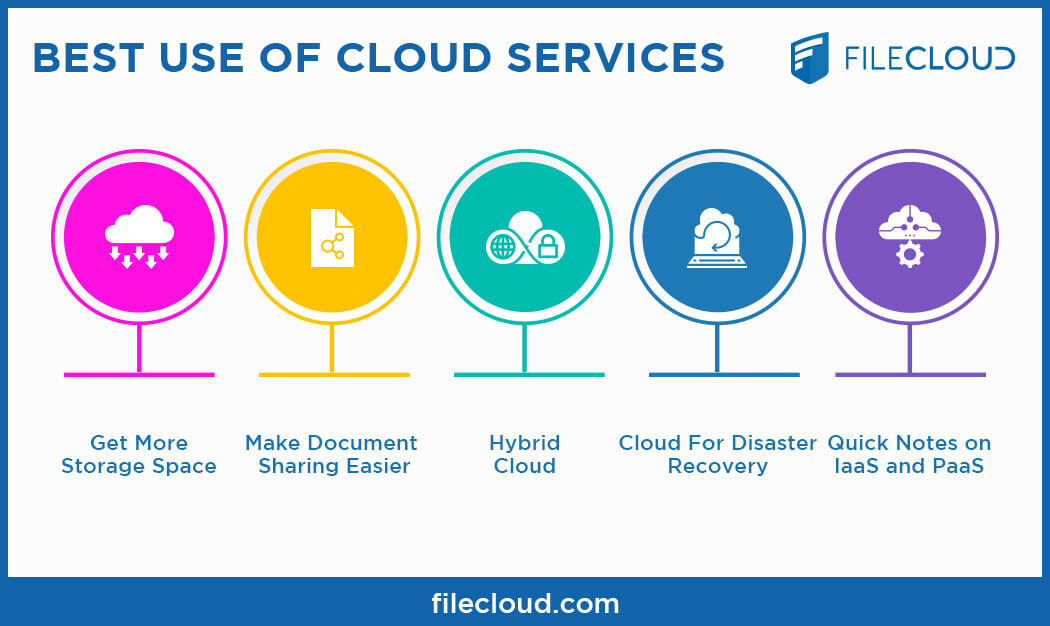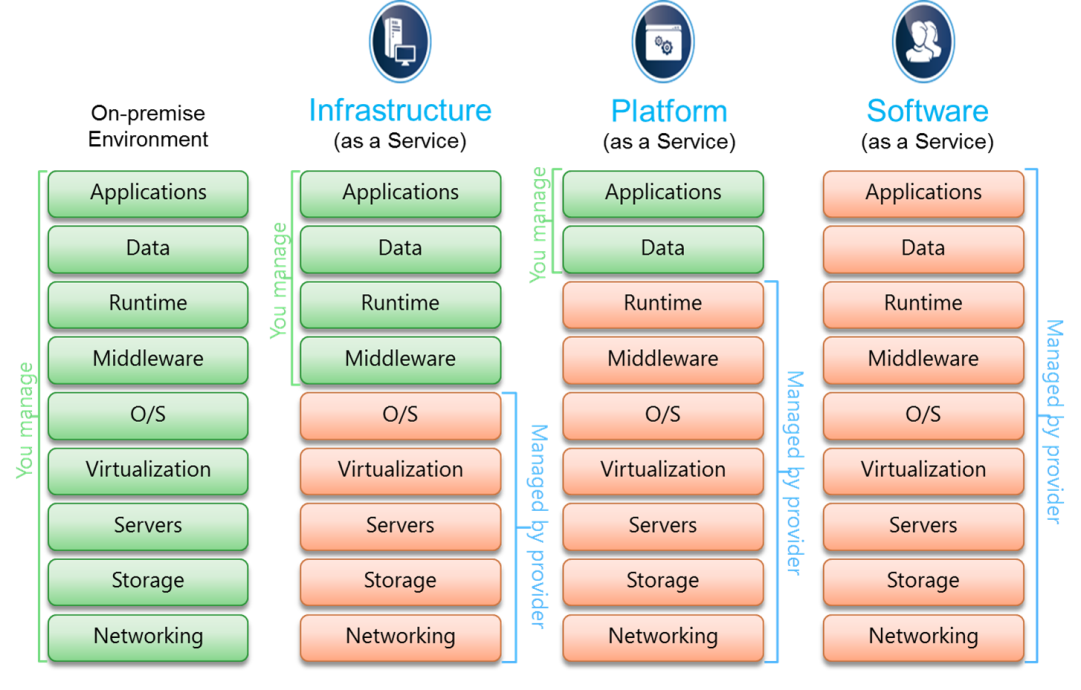Make The Most Of ROI With Strategic Cloud Provider
In the fast-evolving landscape of organization modern technology, the strategic utilization of cloud services has come to be an extremely important factor to consider for organizations intending to boost their return on investment. By aligning cloud solutions with certain service goals and employing a thorough method to source management, companies can open a plethora of advantages that expand past simple price financial savings. The detailed interaction in between price optimization, scalability services, and rigid security actions in the realm of cloud computing holds the key to not just prospering however making it through in today's competitive market.
Benefits of Cloud Solutions for ROI
Leveraging cloud services can considerably improve roi by simplifying operational effectiveness and decreasing framework expenses. One vital benefit of cloud services is the scalability they provide. Services can conveniently scale their resources up or down based on need, allowing for expense financial savings by only paying for what is utilized. This elasticity makes sure that firms do not have to spend in costly on-premises equipment that might remain underutilized.
Additionally, cloud services provide improved flexibility and agility. With the capacity to accessibility information and applications from anywhere with an internet link, employees can work extra successfully and work together flawlessly. This flexibility additionally makes it possible for services to rapidly adapt to transforming market conditions, giving them an affordable side.
Additionally, cloud services improve safety and security steps, helping to protect delicate information and minimize threats. Cloud companies often have durable protection methods and frequently update their systems to defend versus cyber threats. By leveraging these solutions, services can minimize the possibility of costly information violations and downtime, ultimately leading to a higher return on investment.
Price Optimization Strategies
Just how can organizations successfully minimize expenditures while making the most of the benefits of cloud solutions? One effective technique is to constantly keep track of and adjust cloud resource allowance based on actual use.
An additional cost optimization strategy involves enhancing information storage by archiving or erasing redundant details. Applying information lifecycle administration plans assists in managing data effectively, reducing storage expenses, and boosting overall system performance. Additionally, using serverless modern technologies can aid in more expense reduction by billing only for actual usage as opposed to provisioning and maintaining devoted web servers.

Scalability and Adaptability Solutions
For organizations seeking to improve their operational efficiency and responsiveness to transforming demands, implementing scalable and flexible cloud options is paramount. Scalability and adaptability in cloud solutions allow organizations to readjust their sources according to varying workloads, making sure optimal efficiency without unneeded expenses. By leveraging cloud scalability, organizations can seamlessly enhance or decrease their computing power, storage space, and data transfer as needed, allowing them to satisfy peak needs without overprovisioning resources during slower periods.
Moreover, versatility in cloud solutions allows companies to adapt swiftly to market modifications and technical improvements. With the capability to quickly navigate here integrate brand-new devices and services into their existing cloud facilities, companies can remain dexterous and affordable in today's hectic business setting. Whether it's releasing brand-new applications, increasing right into new markets, or accommodating remote workforces, flexible cloud solutions offer the dexterity and flexibility required for continual growth and success.

Safety Procedures for Data Security
Implementing robust security procedures is necessary for guarding sensitive information and making certain information security in cloud settings. When making use of cloud solutions, companies should prioritize security to alleviate risks associated with data breaches and unauthorized access.
Multi-factor verification (MFA) is an additional vital security procedure that adds an added layer of security by requiring customers to give numerous forms of verification prior to accessing delicate details. This aids stop unapproved gain access to, even if login credentials are compromised.
Normal security audits and surveillance are essential parts of maintaining data security in the cloud. By monitoring and conducting routine evaluations for any type of suspicious tasks, companies can promptly determine and deal with prospective safety risks before they intensify.
Additionally, carrying out role-based accessibility control (RBAC) makes certain that only licensed employees can access particular data collections, reducing look here the danger of data leakages or unauthorized adjustments (linkdaddy cloud services press release). By integrating these safety and security gauges right into their cloud strategy, organizations can enhance data defense and minimize safety and security susceptabilities
Maximizing Operational Performance
To optimize operational efficiency in cloud environments, tactical resource appropriation is critical for enhancing procedures and boosting overall efficiency. By leveraging cloud services effectively, organizations can scale sources up or down based upon demand, decreasing functional costs and taking full advantage of effectiveness. Automating regular jobs, such as software program updates or data back-ups, through cloud administration devices can release up IT groups to concentrate on more calculated efforts. Executing surveillance and analytics tools within the cloud facilities allows for real-time exposure into efficiency metrics, enabling proactive recognition and resolution of prospective concerns prior to they influence operations. In addition, embracing a cloud-native approach to application growth and release can even more maximize functional effectiveness by enhancing dexterity and reducing time to market for brand-new services. Collaborating carefully with cloud provider to straighten resources with business purposes and consistently optimizing and reviewing cloud use can guarantee that functional effectiveness continues to be a leading priority for continual success in the cloud setting.
Conclusion
In conclusion, leveraging calculated cloud services can significantly boost functional performance and minimize infrastructure prices, eventually maximizing return on financial investment for organizations. By implementing cost-saving techniques, optimizing information storage space, and guaranteeing data protection with safety steps, businesses can achieve scalability, adaptability, and enhanced performance her comment is here in the cloud environment. Optimizing ROI with cloud services requires continuous surveillance, optimization, and automation to adapt to altering workloads and make certain sustained development and success.
Additionally, cloud services boost security steps, aiding to protect sensitive data and alleviate risks (Cloud Services).Executing robust safety steps is vital for safeguarding delicate information and making sure data defense in cloud atmospheres. When making use of cloud services, organizations need to focus on protection to reduce risks linked with information violations and unapproved access. Teaming up very closely with cloud solution providers to align resources with organization goals and consistently reviewing and optimizing cloud usage can make sure that functional effectiveness continues to be a top priority for sustained success in the cloud setting
By executing cost-saving approaches, maximizing information storage, and ensuring data security through protection actions, organizations can attain scalability, adaptability, and boosted performance in the cloud environment.